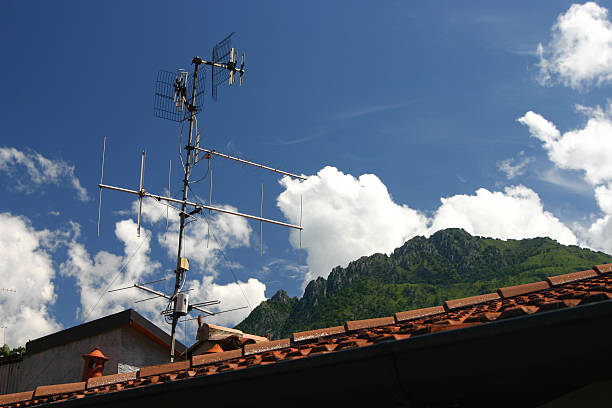Introduction
Have you ever thought that something smaller than your fingertip could change the way we connect with the world? Enter Antennino, a tiny yet groundbreaking micro-antenna designed to redefine wireless communication. While it might look insignificant at first glance, packs a punch, bridging devices, enhancing connectivity, and opening doors to futuristic technologies we only dreamed about yesterday. In this article, we’ll dive deep into the universe of , exploring its design, uses, benefits, and the science that makes it tick.
What is Antennino?
At its core, is a miniaturized antenna—smaller than traditional antennas but engineered for maximum efficiency. Unlike bulky antennas that demand space and power, Antennino is nimble, energy-efficient, and adaptable.
-
Ultra-compact size: Can fit into devices where traditional antennas cannot.
-
High performance: Maintains signal strength despite its small footprint.
-
Versatile applications: From smartphones and wearables to IoT devices.
The genius of Antennino lies not only in its size but in its intelligent design. Engineers have employed advanced materials and geometric patterns to ensure it captures signals without interference, all while being almost invisible to the naked eye.
The Design Magic Behind Antennino
You might be wondering, “How can something so small actually work?” The secret is in its ingenious structural design. Antennino employs:
-
Microstrip technology: Layered circuits that maximize signal capture.
-
Nano-materials: Light, flexible, and highly conductive substances.
-
Adaptive geometry: Shapes that can twist, bend, or expand based on the signal environment.
Think of it as origami for technology. Tiny folds and patterns in the structure allow it to work more efficiently than many antennas three times its size.
Applications of Antennino
Antennino isn’t just a cool gadget—it’s a practical solution to modern connectivity challenges. Here are some key areas where it’s making waves:
1. Smartphones and Tablets
-
Improved signal strength in compact devices.
-
Reduced battery drain due to energy-efficient design.
2. Wearable Technology
-
Seamless integration into smartwatches, fitness bands, and AR glasses.
-
Enables reliable connectivity without bulky add-ons.
3. Internet of Things (IoT) Devices
-
Smart home devices can communicate faster and more reliably.
-
Industrial IoT sensors benefit from stable connections even in crowded environments.
4. Medical Devices
-
Miniature implants and monitoring devices can transmit data safely.
-
Ensures critical patient data reaches medical professionals in real time.
It’s no exaggeration to say that is quietly revolutionizing multiple industries simultaneously!
Why Antennino Stands Out
So, what sets Antennino apart from other antennas on the market? Let’s break it down:
-
Scalability: Works in tiny gadgets as well as larger devices.
-
Durability: Resistant to wear, moisture, and temperature fluctuations.
-
Efficiency: Captures and transmits signals effectively with minimal energy.
-
Discreet Design: Almost invisible, making it ideal for sleek modern devices.
It’s like having a superhero hidden in your gadget, quietly making your life easier without asking for any credit.
Challenges in Developing Antennino
Of course, no technology is without its hurdles. Antennino’s creators faced several challenges:
-
Miniaturization Limits: Making antennas smaller often compromises performance.
-
Material Selection: Finding conductive yet flexible materials was a painstaking process.
-
Signal Interference: Tiny antennas are prone to interference from other electronic components.
-
Manufacturing Precision: Even a micrometer of error can reduce efficiency drastically.
Yet, overcoming these obstacles has pushed the boundaries of modern engineering and microfabrication techniques.
FAQs About Antennino
Q1: Can Antennino be integrated into any device?
Yes! Its compact and flexible design makes it adaptable for most electronics, from phones to IoT sensors.
Q2: Is Antennino energy-efficient?
Absolutely. It requires significantly less power than traditional antennas, extending battery life in portable devices.
Q3: How durable is Antennino?
It’s designed to withstand environmental stress, including heat, moisture, and mechanical strain.
Q4: Will it improve my Wi-Fi or mobile signal?
In many cases, yes. Its optimized design enhances signal reception and reduces dropouts.
Q5: Is Antennino expensive to produce?
Initially, costs were high due to material and manufacturing precision. However, mass production has made it more accessible.
The Future of Antennino
The possibilities for Antennino are practically endless:
-
Smart Cities: Antennino-enabled sensors could monitor traffic, pollution, and energy usage seamlessly.
-
Augmented Reality (AR): Miniature antennas in AR glasses could provide uninterrupted, real-time data streaming.
-
Healthcare Revolution: Tiny implants and wearables can safely transmit patient information wirelessly.
-
Space Technology: Micro-antennas could facilitate communication in compact satellites and drones.
With ongoing research, Antennino could soon become a staple in devices we haven’t even imagined yet.
Conclusion
In a world obsessed with size and power, Antennino proves that small can be mighty. This micro-antenna is more than just a technical marvel—it’s a glimpse into a future where connectivity is seamless, efficient, and everywhere. From smartphones to healthcare, wearables to smart cities, Antennino is quietly reshaping how devices communicate, making life a little smarter, smoother, and more connected.
So next time you’re streaming a video, tracking your health, or controlling a smart home device, remember: there’s a tiny hero inside making it all possible—Antennino.







